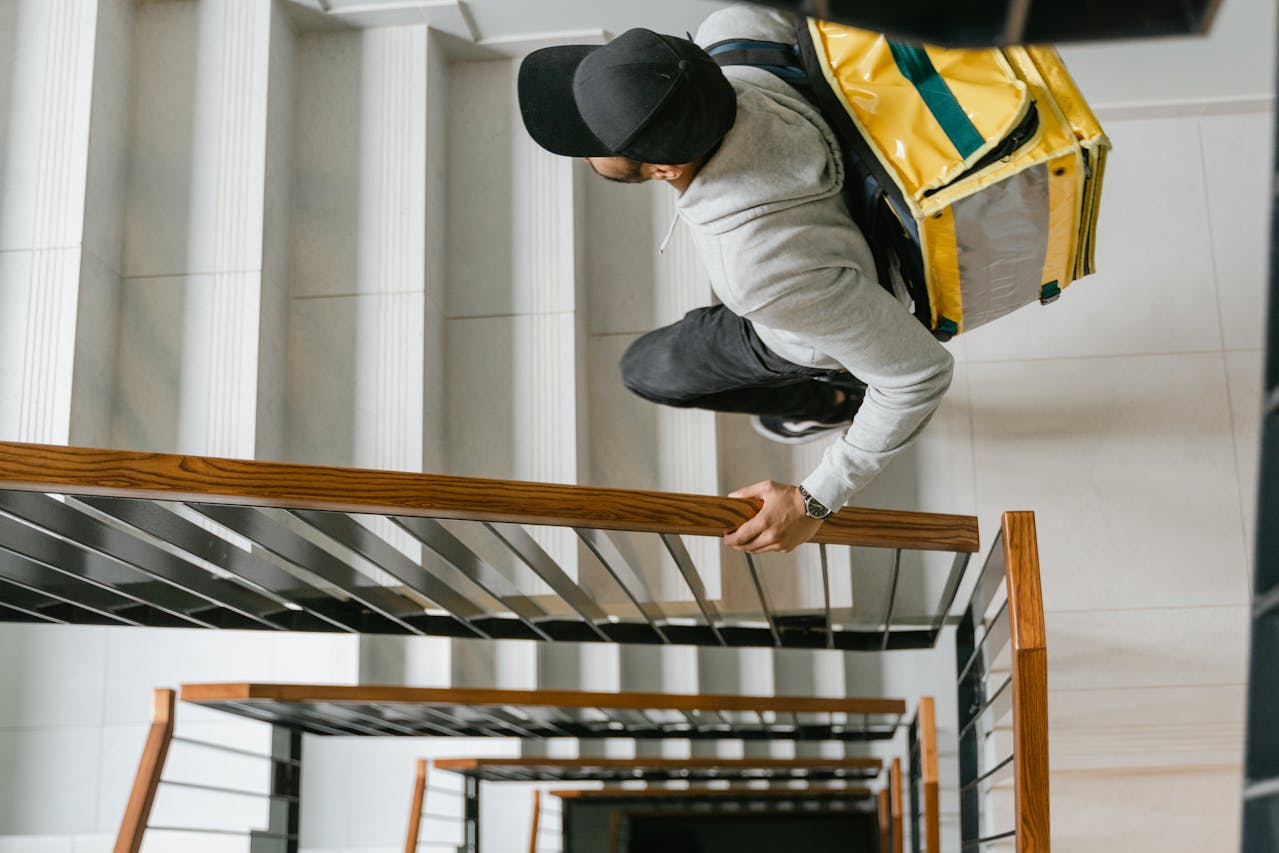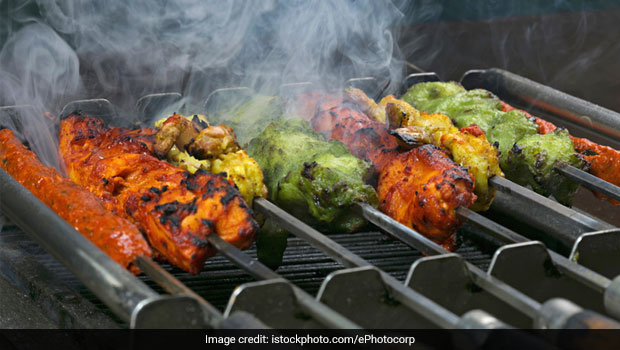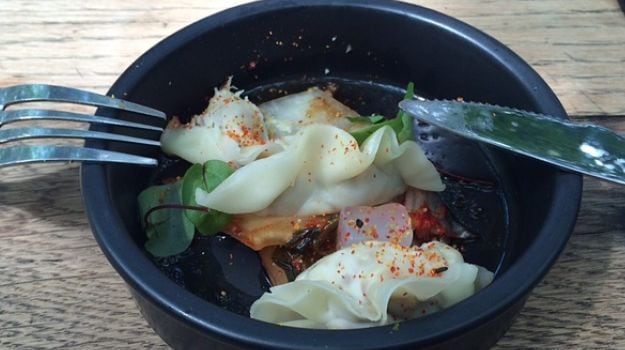Nobody loves me, everybody hates me? Try some mealworm dumplings with kimchi and nate de coco. I’m not a huge fan of kimchi, but this was a lot more enjoyable than I’d expected it to be. Photograph: Tash Reith-Banks The Shuffle festival in east London runs until this Saturday, and its science programming is genuinely exciting. And that’s before we get to eating worms.It was about the time that the starter arrived that I began to fear for my four-month-old marriage.
Let's be clear: I hadn't exactly lied to my husband. I had told him that I was taking him out to lunch and then to see a short film.
I just hadn't told him that the restaurant was in a tree in Tower Hamlets cemetery park, lunch was mealworm dumplings and a sort of corn fungus or that the film was a virtual reality trip into a refugee camp in Jordan.
I'm the best wife. The best.
I'd like to make it clear that the day I had planned wasn't entirely a stab in the dark in terms of enjoyment. We both like food and films, and the Shuffle festival promised both, with its week-long programme of science, film, storytelling and more, all linked to this year's theme: Movement, Migration and Place. The two elements which had caught my eye were the Symbiosis treehouse restaurant and a virtual reality film experience called the Feelies.
The festival is funded in part by the Wellcome Trust, who have had a bumper year at festivals across the country this year, with science seemingly more popular with the public than ever before. Grace Boyle, science programmer for Shuffle, sees this outreach as being key to the spirit of Shuffle.
"It's a community festival first and foremost" she says. In the face of gentrification of urban areas and the middle-class lionisation of London's arts scene, she points to the community engagement that is central to the ethos of Shuffle. "The low price point is very important to us - a fifth of the tickets for the Feelies were set aside as concessions, we went to all the local schools and colleges, we're working with 50 local organisations and four of the lunches in the restaurant were charity lunches."
The restaurant is a pop-up treehouse, designed by Jessica Sutton and with the kitchen run by forensic-scientist-turned-chef India Hamilton. For "£15 we were promised a three-course meal which would make us consider our relationship with food, the environment and, as it turned out, each other.
As the name suggests, the restaurant is working to a theme: symbiosis. The menu was put together according to the different types of symbiotic relationship: mutualism (a relationship which is mutually beneficial to both organisms); commensalism (in which one organism benefits and the other isn't significantly harmed or helped); amensalism (one organism adversely affects the other, but derives neither benefit not harm itself) and parasitism (in which one organism benefits to the detriment of the other).

The menu was varied, with influences ranging from Europe to Asia and south America, and excitingly (to me, anyway) some dishes contained ingredients foraged from the cemetery park itself.
Having been on a Gap Yah in south-east Asia many, many years ago, I have already experienced the delights of fried insects and the lesser joys of boiled insects. With this and the importance of investigative journalism in mind I chose the mealworm dumpling starter, fully expecting my husband to go down the squid or blue cheese route. However, he gamely opted for the dumplings too, with a corn smut chicken taco main. I chose the orzotto-fungi-algae combination for my main course, and we sat back to wait. I spent the time enjoying the feeling of being high up in the forest, watching the leaves sway around us and sniffing the enticing smells emanating from the ground below. My husband spent the wait anxiously looking at the plates of other diners and saying fretfully: "Corn smut is a fungus? I'm going to be sitting in a tree eating fungus and worms? I think society might be moving backwards." It's fair to say he was nervous.

The mealworm starters arrived, looking extremely unwormy, which I'm going to say was a plus. It was liberally laced with chilli, giving it a good kick, and the kimchi was all that fermented cabbage should be. The dumplings themselves were pretty tasty, although seemed slightly rubbery and undercooked (possibly a consequence of the torrential downpour the day before, which had disrupted power and construction across the site). However, they were pretty enjoyable; well, my husband said "not horribly offensive" and rather enjoyed the kimchi, so we'll take that as a win. The very nice chap sitting next to me at our communal table offered me a taste of his blue cheese starter, which was gorgeous: rich, creamy with the slight bite of mould.
The main courses impressed in their simple tastiness. This in fact was a real triumph: to introduce new and potentially challenging foods such as algae and corn smut (also known as Mexican truffle or huitlacoche) and turn them into something that was more than palatable as well as being unconfronting seemed to me to be the beginning of a great conversation about food sources and security.

The dessert was absolutely gorgeous in taste and presentation: a lemon and gooseberry posset with edible violet flowers which , pleased everyone at the table. We left the restaurant impressed and thinking about cooking orzotto with algae at home: a definite win for sustainable food.
Next up were the Feelies, two multisensory films using virtual reality headsets. Boyle explained that the idea for the installation came from a long-standing desire to create a version The Feelies as conceived by Aldous Huxley in Brave New World. "In Brave New World it's quite a clunky experience, so this was about thinking "in 2015, what's the next natural step?'"
The films were the work of production company Vrse.works and produced by Patrick Milling Smith and digital artist Chris Milk. They were chosen for their relevance to the festival's theme and an experience was then created around them by Boyle with Charles Spence and Charles Michel from the Crossmodal Research Laboratory at the University of Oxford. What they have devised is a fantastic small-scale, intimate experience. Only four audience members are admitted at a time. Assigned a volunteer technician each, audience members are fitted with headsets and headphones and led into the the viewing rooms. Neither my husband nor I had used a VR headset before, much less in a truly immersive setting like The Feelies, and it blew us away.

Without wanting to give too much away, the first film, Walking New York, placed us squarely amongst the sights, sounds and sensations of the city and in the midst of the construction of a huge artwork. The second, Clouds over Sidra, took us across real sand to sit in the Za'atari refugee camp in Jordan to observe the life of families living there. The feel of the desert in winter, and the smell of baking bread, among other sights and sounds, were captivating. Both films are provocations on the idea of migration and place, and if that sounds like a rather heavy way to spend your leisure time I have to urge you: go and try it. We left informed, uplifted, moved and with a fresh perspective on the human stories behind both films.
Both pieces of footage are available on the Vrse.works app, which is a key part of taking this campaigning filmmaking further, but if you're in east London this weekend, I recommend you go and check it out for yourself at Shuffle.
For a full programme of events and ticket details see the Shuffle festival website . The festival runs until Saturday August 1.







